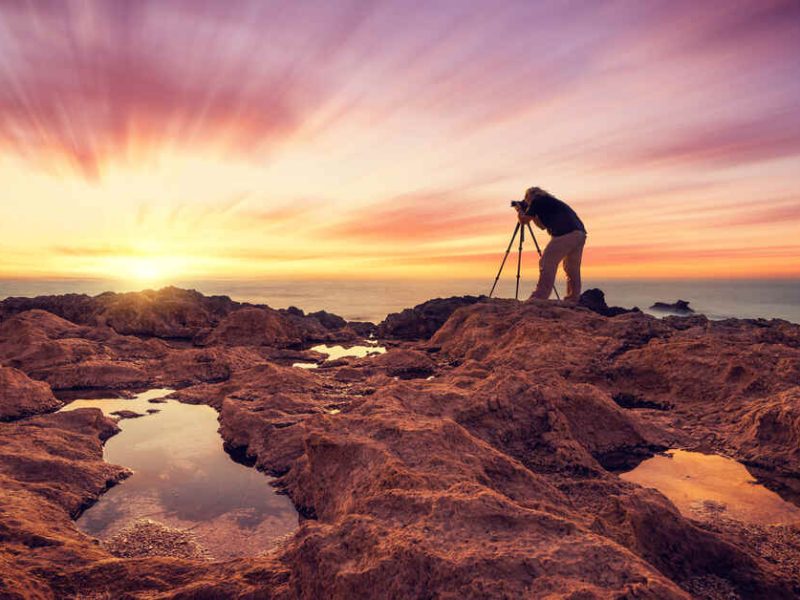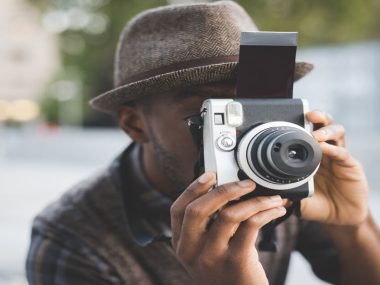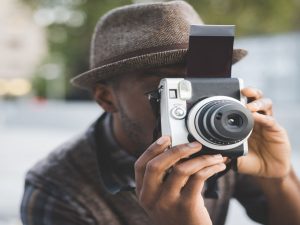Photography is not merely about making captures but making stories using visual art. Composition is one of the most important aspects of photography that will bring your photographs down to their knees and make them soar high. Photography composition can be defined as a pattern of visual objects within an image frame. Learning to compose can go a long way in influencing how your pictures are perceived thereby attracting people to look and creating emotions. In this blog, we will discuss critical concepts of photography composition, general tips that one can use to build up on his/her skills and some techniques that help him/her produce excellent photographs.
Learning the Topics of Composition
Composition, as is, is the act of thinking over what goes in a photograph. The following are some of the background concepts to enable you to understand the basics of photography composition.
1. The Rule of Thirds
The Rule of Thirds is one of the most known ways of composition. Suppose you had in your picture two horizontal lines and two vertical lines, dividing your picture into nine equal parts. What is meant is to put the scenes in your scene, the most significant ones, along these lines or at their intersections. This effect brings a sense of balance and interest and is a foundational advanced photography tip for directing the viewer’s eye.
Example: Think of the case of a landscape where you are photographing the landscape, you want to place the horizon on the top or bottom third of the picture as opposed to the center. This technique builds a more moving picture that would appeal to the observer.
2. Leading Lines
Leading lines Leading lines in your scene are the natural lines leading to the eye of the viewer to the subject. Such lines may be roads, rivers, fences or any line which forms a pathway in the image. The leadership lines will also be used to create depth and perspective, and thus the image seems more in-depth.
Exception: A landscape photograph may have a winding road, so that the eye of a viewer follows the road to the background, giving a feeling of exploration and adventure.
3. Framing
Framing entails incorporating elements in the scene in order to form a frame around your subject. The main focus of this technique is on the subject and makes it stand out and bring extra depth to the picture. Natural frames are located in archways, branches or windows.
Example: When you are taking a picture of someone standing in a doorway, you can use the sides of the doorway to frame the subject, and this will help to separate the subject and the background, and focus.
The Importance of Balance
Photography composition balance is used to describe how weight is allocated in a photograph. Balance can, therefore, bring harmony to your pictures which makes them more attractive.
1. Symmetrical Balance
Symmetrical balance refers to the distribution of elements in an image in terms of balance, on both sides. This method is capable of providing an impression of order and stability, so it is suitable in the formal composition.
Example: The image of a building in a still lake may have a symmetrical balance; the left and right sides of the photo are reflected in the water.
2. Asymmetrical Balance
Asymmetrical balance on the other hand is where various elements are placed such that they bring balance without reflecting on either side. The method has the ability to introduce tension and interest to a photo.
Sample: You would have a big tree on one side of the frame and you would have a small object like a person on the other side. These contrasting sizes provide balance in terms of visual weight in contrast to symmetry.
The inclusion of Depth and Layers
Giving depth to your photographs makes it three dimensional making them more interesting. This effect can be obtained by adding layers.
1. Background, Midground, and Foreground
In writing your shot, you should consider that there should be objects in the foreground, midground and background. Such layering brings out the feeling of dimension and makes the viewer want to investigate the picture.
Example: In a landscape picture, you have to use flowers in the foreground, the mountains in the middle ground and a spectacular sky in the background. The combination attracts the viewer with the sight of the whole scene.
2. Overlapping Elements
In a composition, the overlap of elements may add depth to it. The overlapping creates a more three dimensional feel as it creates an impression that certain objects are nearer to the viewer as compared to others.
Example: When you take pictures of someone standing behind the fence, the fence that is rupturing the subject gives the viewer a clue that shows there is distance and depth.
2. Finding Shadows as Composition Tools
Shadows have the potential to give your shots more interest and drama. They are able to come up with shapes and patterns that add to the composition. The manipulation of shadows may result in original and fascinating pictures.
Examples: The shadow of an individual on a rough wall could give a significant contrast in the image and provide texture to the image.
Testing the Water with the Wet-Foot
Reaching a new mindset may result in thrilling and original compilations. There is nothing to be afraid of trying out various angles and perspectives.
1. Low and High Angles
By casting low angle shots a subject can seem bigger and taller whereas by casting a high angle shot a wider view of the action will be available. The experimentation with these angles may be surprising.
Examples: When posing a photograph of a child at his eye level, it will result to a closer and personal view unlike when one captures a large building at the base and highlights its size.
2. Close-ups vs. Wide Shots
Think of the effect of making your subject smaller or bigger and more of the environment. Details can be highlighted with close-ups and put the subject in the context with wide shots.
An example: A close-up of a flower can bring out detailed information whereas a wide shot of a field of flowers can bring out the beauty of a landscape in all its glory.
Post-Processing Techniques
Post-processing is a critical component of photography that can be used to improve composition. Cropping, exposure, fine-tuning colors and other techniques can help hone your photos.
Conclusion
Learning to compose photographs is a process and one takes practice and has to experiment and learn. You can use the compositional concepts of the Rule of Thirds, leading lines, and balance to come up with beautiful images that will inform the viewers and connect stories. Always keep in mind that you should experiment with photographic viewpoints, use light and shadow and polish your pictures in post-processing. Through hard work and innovation, you will devise your own style and method of photography and produce beautiful photos that would become a representation of your vision of art.
FAQs
1. What is photography composition?
Photography composition can be described as a visual arrangement of elements of a photograph that deals with how these elements relate to each other to produce an interesting photograph.
2. So, what is its significance of composition in photography?
The point of composition is important since it defines the effectiveness with which a photo conveys its subject and its emotion. A good composition will attract the viewers and increase the overall impression of the picture.
3. Am I able to disobey the rules of composition?
Absolutely! Although it is crucial to know the rules of composition, their violation may result in original and innovative pictures. The most important aspect of style building is experimentation.










